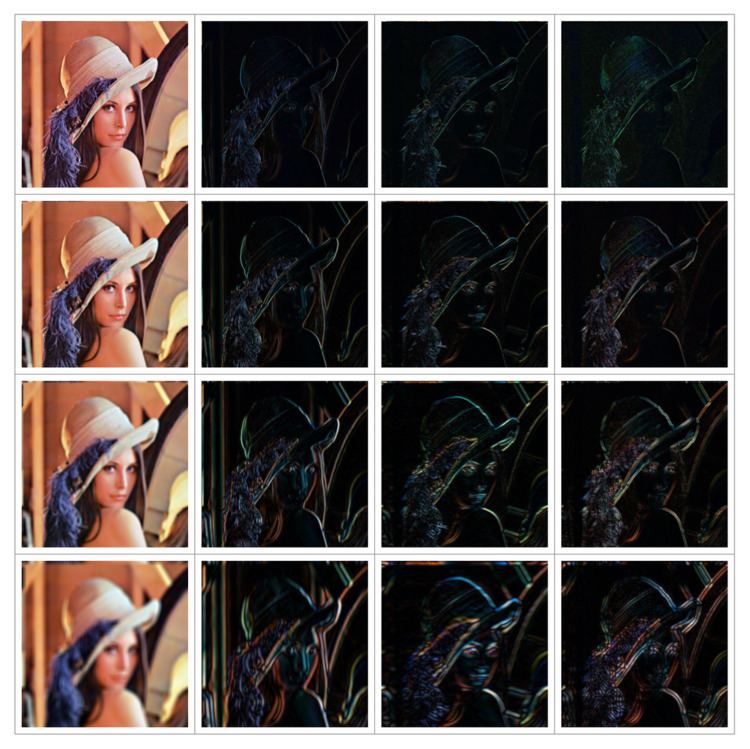The Stationary wavelet transform (SWT) is a wavelet transform algorithm designed to overcome the lack of translation-invariance of the discrete wavelet transform (DWT). Translation-invariance is achieved by removing the downsamplers and upsamplers in the DWT and upsampling the filter coefficients by a factor of 2 ( j − 1 ) in the j th level of the algorithm. The SWT is an inherently redundant scheme as the output of each level of SWT contains the same number of samples as the input – so for a decomposition of N levels there is a redundancy of N in the wavelet coefficients. This algorithm is more famously known as "algorithme à trous" in French (word trous means holes in English) which refers to inserting zeros in the filters. It was introduced by Holschneider et al.
The following block diagram depicts the digital implementation of SWT.
In the above diagram, filters in each level are up-sampled versions of the previous (see figure below).
A few applications of SWT are specified below.
Signal denoisingPattern recognitionBrain image classification Pathological brain detectionRedundant wavelet transformAlgorithme à trousQuasi-continuous wavelet transformTranslation invariant wavelet transformShift invariant wavelet transformCycle spinningMaximal overlap wavelet transform (MODWT)Undecimated wavelet transform (UWT)
